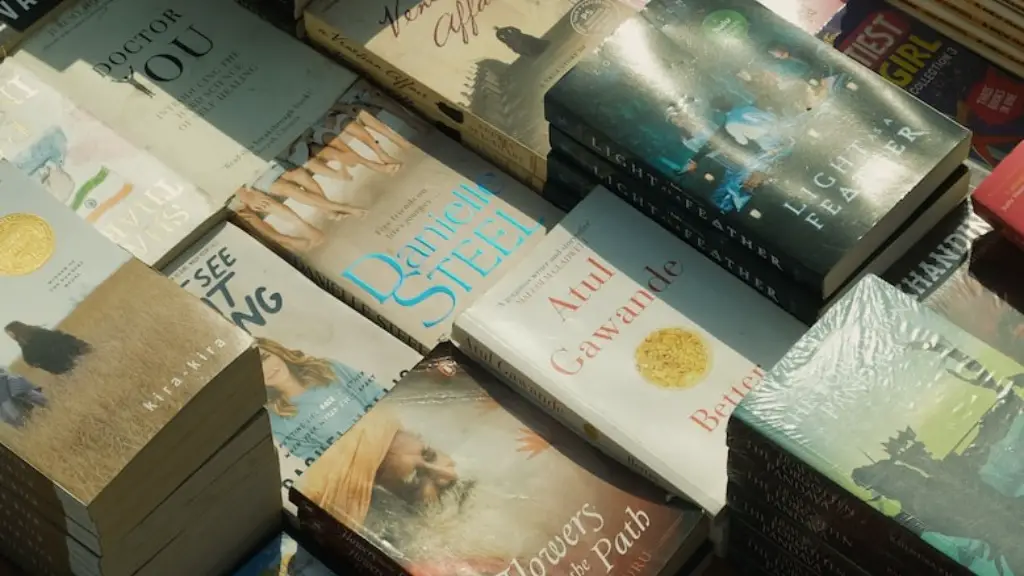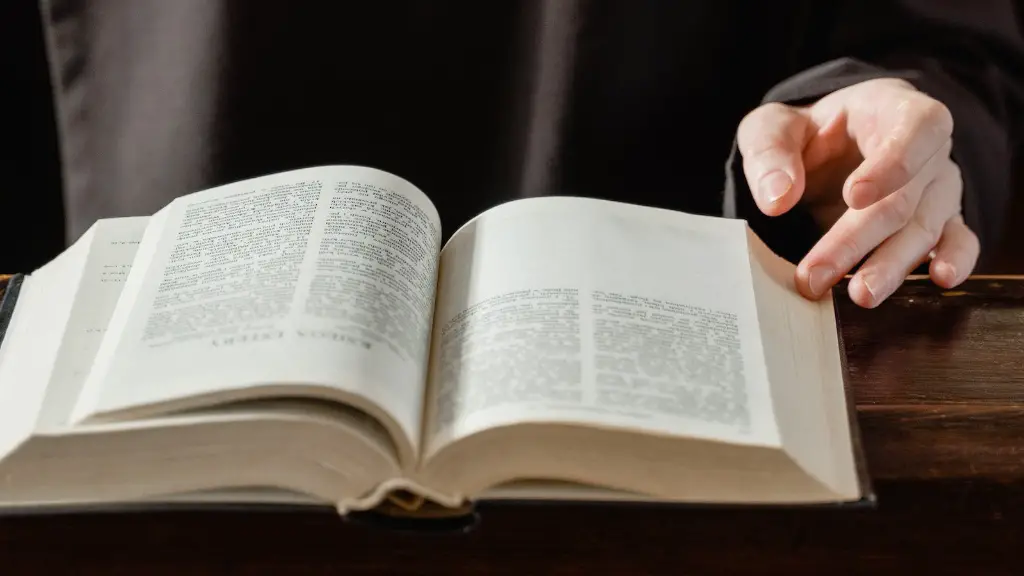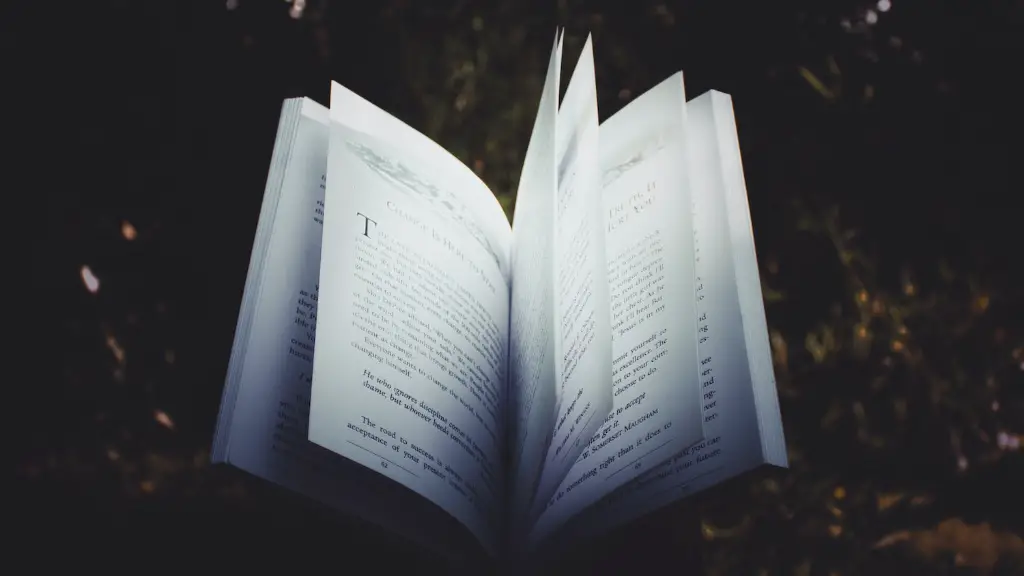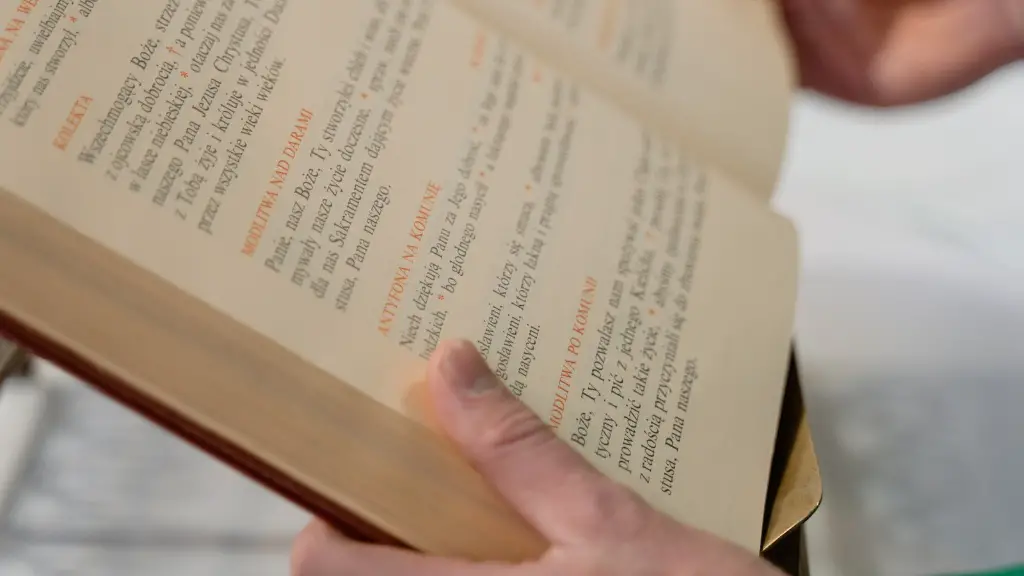The beauty of poetry lies in the way it captures and expresses emotions. Many poets have spent their lives exploring the range and depth of emotion, from joy and bliss to despair and sadness. Poetry can be a powerful tool for conveying these feelings and connecting with others. There are many different types of poetry that can be used to effectively express feelings and emotions, some of which include haiku, sestina and sonnet.
Haiku is a form of Japanese poetry that is composed of three lines, with a total of seventeen syllables. Traditional haikus often focus on nature, but it can also be used to convey emotion. A successfulhaiku will often use vivid imagery to transport the reader to a different place. For example, a haiku by the Japanese poet Issa reads “The world of dew/ is the world of dew./ And yet, and yet…” This haiku captures a feeling of longing and thoughts of elusiveness.
Sestina is a form of poetry that revolves around a specific set of six words. Sestinas are often written in iambic pentameter and are tied together with connecting rhymes. The six words are then repeated in different forms throughout the poem in a specific order. This allows for seamless transitions and adds to the overall emotion of the poem. It can be used to tell a story or express feelings in a creative way.
The sonnet is perhaps the most well-known type of poetry in the English language. Traditionally it is composed of fourteen lines, with a specific rhyme scheme and meter. It is an incredibly versatile form, as it can be used to express joy, sorrow, rage and many other emotions. Many poets have used the sonnet to convey love and despair in a very powerful way. Two of the most famous sonnets in the English language are Shakespeare’s “Sonnet 18” and his “Sonnet 116”.
Though all of these types of poetry have the capacity to express a wide range of emotions, they can be difficult to write. Poets must learn to choose their words carefully and find the right way to express the emotion they are feeling. They must also be aware of the various devices they can use to create a deeper meaning and evoke responses from their readers. Ultimately, it takes practice and dedication to master the art of expressing emotions through poetry.
Poetry as Therapy
Writing poetry can be a form of therapy as it provides an outlet to creatively express one’s emotions. It can be helpful in dealing with a range of issues, including depression and anxiety. In some cases, it can even be used as a tool to better understand oneself and one’s emotions. Writing poetry can also be an effective way to cope with trauma and loss, allowing the writer to process their feelings and come to terms with their emotional state.
Therapeutic poetry can involve writing about anything from one’s inner thoughts and feelings to the physical world. It can also be used to express gratitude or focus on the positive aspects of life. No matter what the subject, the goal is to create an emotional connection that can help with healing and self-reflection. Writing is not the only way to use poetry for therapeutic purposes; reading and sharing poetry can also be helpful in expressing and understanding emotions.
Writing poetry can be a powerful tool for anyone looking to explore and express their emotions. It provides a unique opportunity to delve deeper into our innermost thoughts and feelings, while also providing an outlet for creating something beautiful. Poetry can bring solace and comfort in difficult times, but it is also a way to celebrate the good times. Poetry is a powerful way to capture, express and connect with emotions in ways that words alone cannot.
The Role of Music in Poetry
The rhythm and melody of music can add depth and power to poetry. By incorporating elements of music, poets can emphasize certain words and evoke strong emotions from their readers. Music can be used to set the tone of a poem and add to its overall meaning, allowing poets to emphasize certain points and create a more powerful impact.
Songs, for example, are a form of music with lyrics that are often written as poetry. The lyrics of a song can communicate a wide range of emotions, from joy and love to anger and heartache. Popular music has often been used to address and explore complex emotions, with some songs becoming anthems to entire generations.
Instrumental music can also be used to convey emotion. A piece of music can invoke a particular feeling, often without the need for words. Music can be used to build tension, create a sense of longing or capture the beauty of a moment. By weaving music into poetry, poets can use it to intensify the emotions of their readers, often in ways that words alone cannot.
The Use of Metaphors in Poetry
Metaphors are a powerful tool that poets can use to express emotion and evoke strong images in their readers. A metaphor is a comparison between two unrelated things, often used to emphasize a point or add color and life to a poem. Metaphors can be used to convey a wide range of emotions, from anger and resentment to love and joy. They can also be used to create vivid visuals in a reader’s mind and make a point in a unique and memorable way.
Using metaphors gives poets a way to connect with their readers on a more intimate and emotional level. By comparing the physical, tangible world to an emotion, poets can give readers a chance to relate to their work in a deeper and more meaningful way. Metaphors can also be used to ask questions or provide a new perspective on life. Ultimately, metaphors can be a powerful tool for any poet looking to effectively convey emotion through their work.
Making it Personal
Writing poetry is an incredibly personal experience. Poets must find the perfect combination of words and devices to communicate their feelings and evoke a response from their readers. In some cases, a poet may even be writing about personal struggles and traumas. It can therefore be difficult for a reader to connect with a poet’s words if they have not experienced something similar.
In order to be successful, a poet must be willing to be vulnerable and share intimate details. Many poets have been able to connect with their readers by opening up and sharing stories that are close to their heart. They can use vivid language and metaphors to create an emotional connection that allows the reader to truly relate to their work. Ultimately, sharing personal stories can be a powerful way to effectively convey emotion.
Concluding Thoughts
Poetry is a powerful medium for expressing and connecting with emotions. From haiku and sestina to sonnets and songs, there are many different types of poetry that can be used to effectively capture and express feelings. Poets must be mindful of the tools they use to convey emotion, from metaphors to music, in order to create a powerful and meaningful experience for their readers. Writing poetry can also be a form of therapy, providing an outlet to express one’s emotions and come to terms with difficult issues. Ultimately, poetry gives writers the opportunity to capture and share emotions in creative and powerful ways.




